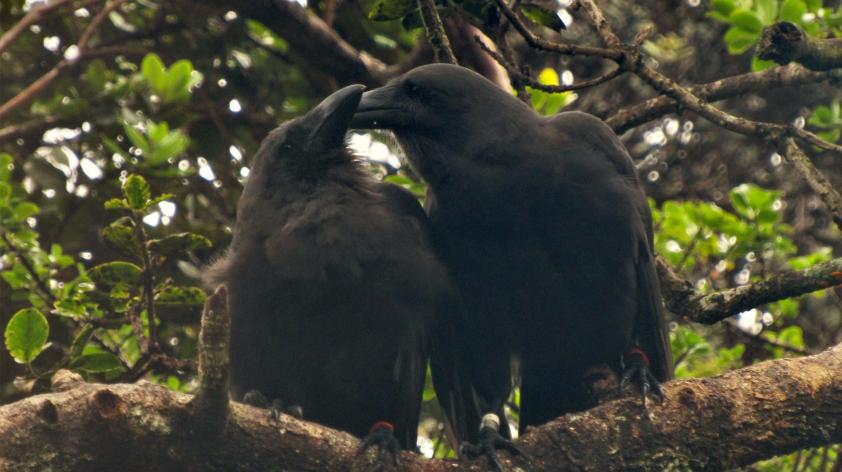
What Makes a Good Pair?
For any critically endangered species, conservation breeding programs offer a way to bolster the numbers of that species in a safer environment than the wild. This is particularly true of the ‘alalā, or Hawaiian crow, a species that until the recent successful releases, was extinct in the wild.
Although we hope that the released birds will eventually be able to produce offspring in the wild, for now the only chance for more ‘alalā is conservation breeding. By the 1990s there were fewer than 20 birds left. We now have a population of over 125 birds thanks mainly to hand rearing efforts, but going forward we want as many individuals as possible raised as naturally as possible.
Thus, one of the main goals of the program is to increase the number of birds hatched and raised by their parents, and that means finding the best pairs possible.
However, what exactly makes a successful breeding pair can be hard to define. The factors that contribute to mate choice are not well understood. We might expect that pairs with lower levels of aggression and higher levels of social bonding behaviors will be less stressed and more likely to produce and raise offspring successfully. There are also anecdotes and notes from animal caretaker staff about which pairs seem to get along or be “good” pairs, but does this actually translate into producing more parent-reared ‘alalā? That’s where I come in.
One of my goals during my time as a research assistant here has been to develop my own project that contributes to the overall conservation goals of the program.
Once we figured out that pairing and breeding would be my focus, we began brainstorming how we could adapt common behavioral tests from the fields of animal behavior and psychology research to fit the needs of the species, and the workings of the conservation breeding center, to quantify breeding pair compatibility and success. We wanted to avoid disturbing the normal routine of the birds as much as possible, so we utilized food and materials the birds normally receive as well as those that were part of their daily enrichment routine.
In order to understand breeding pair compatibility, we are investigating whether pairs share food, defend their territory together, and pay attention and follow the social cues their partner creates. These behaviors may be related to how the pair interacts and how successful they are at surviving and reproducing. If we do find links between these three behaviors and mating success, these tests could be used to inform mate choice in the future or re-pairing unsuccessful pairs. However, there is still much we don’t know about mate choice in the ‘alalā, so anything we can learn about improving our conservation breeding program will help the recovery of the species in the long term.
Given what we know about human relationships, it may seem easy enough to expect that a pair that shows less aggression and more affection might be more compatible. However, it may not be this straightforward. We may find that individuals with similar personalities are more compatible or that opposites attract. What we think of as a compatible pair might not translate into a pair producing more offspring with a higher chance of survival. What we observe in other species may not directly apply to the ‘alalā.
The only way to learn more about what makes a good ‘alalā pair is to let the birds themselves show us.













